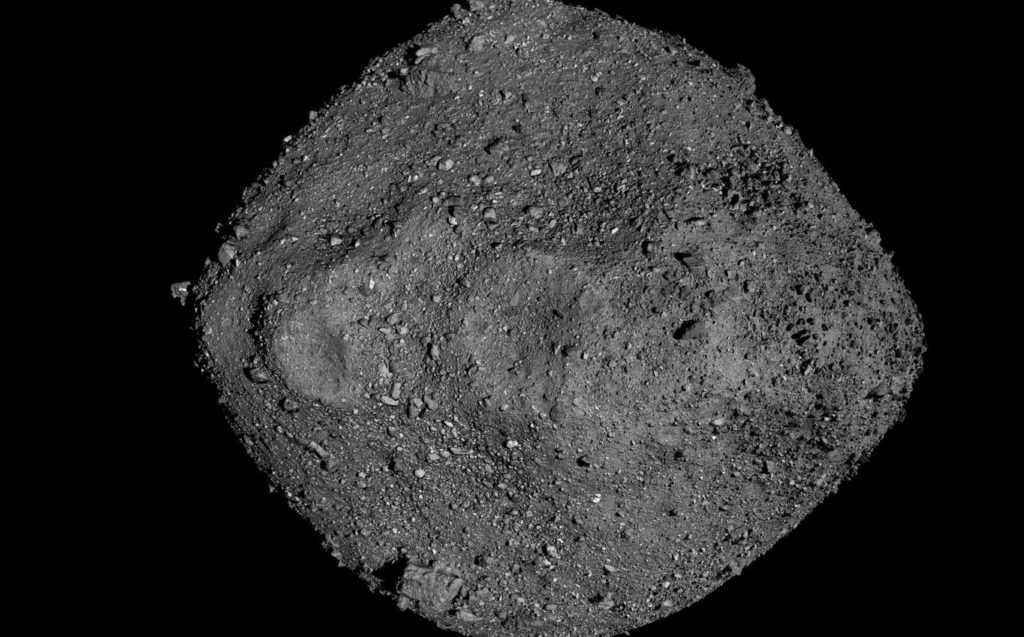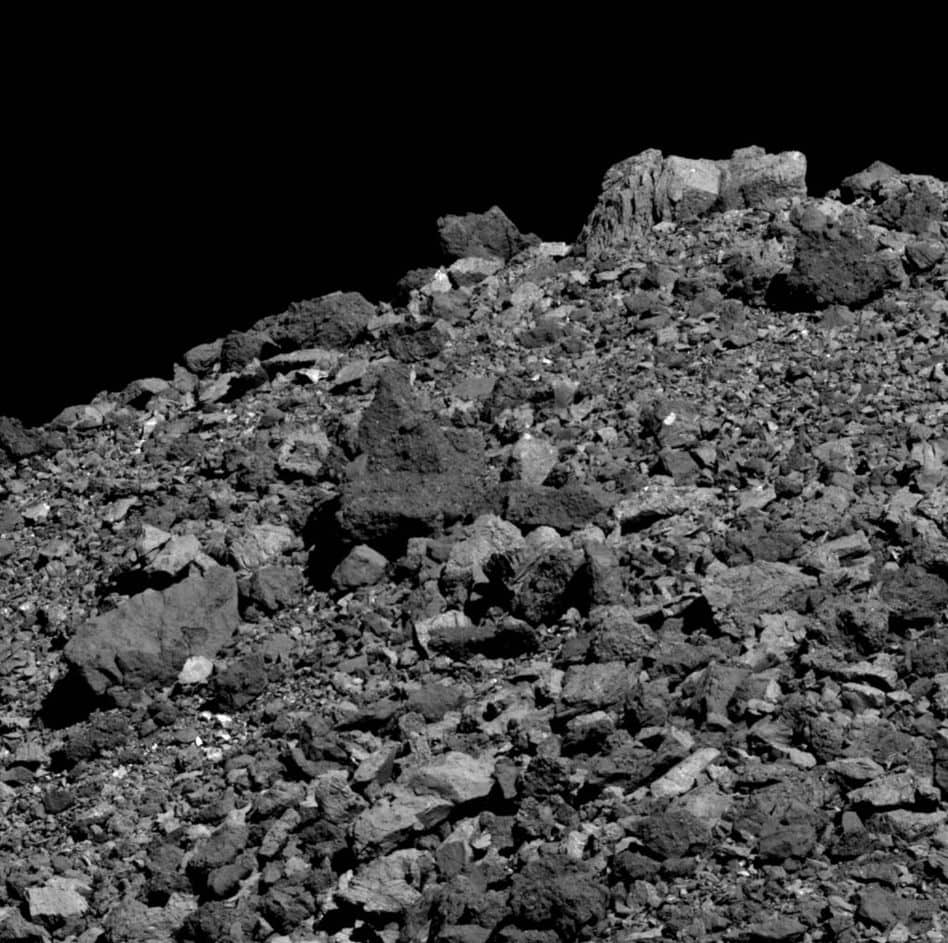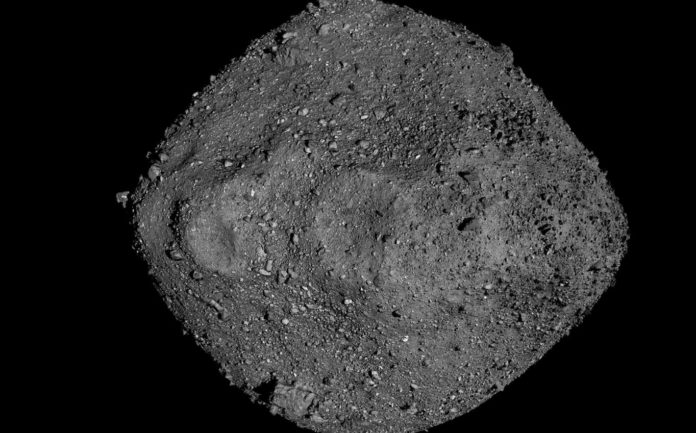In 2020, when NASA’s OSIRIS-REx probe gathered samples from the surface of asteroid Bennu, the forces measured during the contact gave a firsthand test of the little-understood near-subsurface physical features of rubble-pile asteroids.
Now, a study led by the Southwest Research Institute has found that the layer just below the asteroid’s surface is made up of loosely held rock fragments with twice as much empty space as the whole asteroid.
“The low gravity of rubble-pile asteroids such as Bennu weakens its near-subsurface by not compressing the upper layers,” says Dr. Kevin Walsh of SwRI, the lead author of a paper published in the journal Science Advances, “minimizing the influence of particle cohesion.”
“We conclude that a low density, weakly bound subsurface layer should be,” according to the study lead author, “a global property of Bennu, not just localized to the contact point.”

Bennu, an asteroid known as a “rubble-pile asteroid,” is a spheroidal mass of trash and rock pieces that is held together by gravity and has a diameter of 1,700 feet. It is believed to have developed as a result of a collision with a bigger main-asteroid-belt object.
Since being freed from its much bigger parent asteroid some millions or billions of years ago, it has led a harsh life as seen by the rocks that are dispersed across its extensively cratered surface.
The OSIRIS-REx mission’s objective is to gather and return at least 60 grams of surface material from Bennu to Earth in 2023. OSIRIS-REx stands for Origins, Spectral Interpretation, Resource Identification, and Security-Regolith Explorer. Sample-collection activities gave us more information.

Walsh claims that scientists working on the OSIRIS-REx mission have thus far assessed Bennu’s thermal characteristics and craters to determine the density and porosity of individual rubble-pile asteroids.
It has not yet been explicitly investigated how the collection of particles, or regolith, at an asteroid’s surface controls and influences long-term evolution.
The Sample Acquisition Verification Camera (SamCam) of the OSIRIS-REx Camera Suite took pictures of the Touch-and-Go Sample Acquisition Mechanism (TAGSAM) robotic arm before, during, and after the sampling event.
Dr. Ron Ballouz, a co-author from the Applied Physics Laboratory at Johns Hopkins University, adds, “the SamCam images bracketing the moment of contact show the contact caused considerable disturbance at the sample site.”
“Nearly every visible particle is moved or re-oriented at all points along the circumference of TAGSAM up to a 15-inch radius.”
These SamCam images demonstrated how TAGSAM’s downward force lifted a boulder measuring over 16 inches. The boulder was reoriented and little pieces of debris lofted off its surface while being sturdy enough to withstand breaking.
These millimeter-sized particles are able to move under weak stresses, indicating that their cohesive connection with the bigger rock’s surface is weak.
Theoretically, larger asteroids retain smaller materials due to a higher surface gravity, hence the average regolith particle size increases as asteroid size decreases. The group then compared Bennu to asteroids with similar rubble piles.
They found “a dichotomy between the rough, boulder-covered surfaces of Bennu and Ryugu versus Itokawa, which includes,” according to Walsh, “ponds of smaller particles across 20% of its surface.”
“This could have several explanations,” Walsh adds, “including that the latter’s near-surface has compressed enough to frustrate these microparticles percolating into the interior or perhaps the granular deposits are subsurface layers revealed by a recent disruptive reorganization of the body.”
Image Credit: Getty
You were reading: New Research On Bennu Just Changed What We Know About Asteroids
